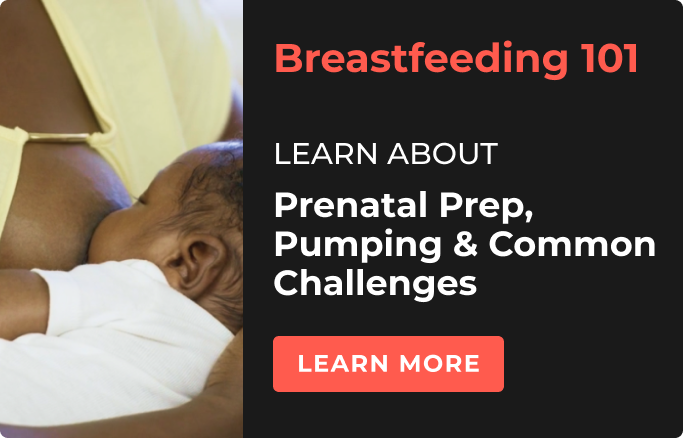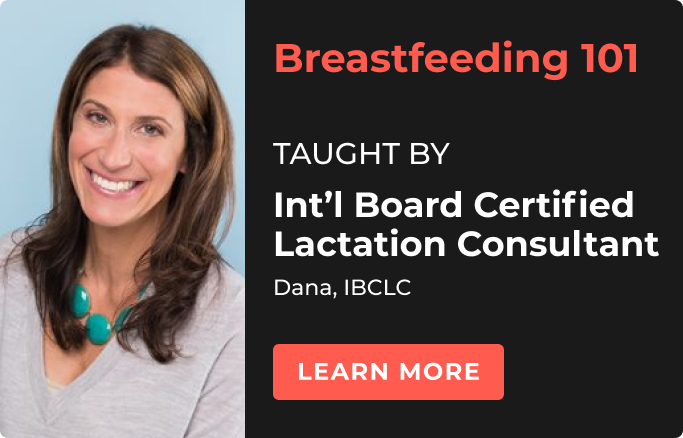Breastfeeding can be one of the most challenging parts of having a new baby. Despite what society may make you think, it doesn’t come as naturally as you would expect. The most important way you can prepare for a successful breastfeeding journey is by taking a class and educating yourself on all things breastfeeding.
In the video below, the expert that leads our Breastfeeding 101 online class, International Board Certified Lactation Consultant (IBCLC), Dana C., walks you through everything you need to know about getting a good latch, different breastfeeding positions, what to expect the first few days after birth, and how much your baby should be eating at each stage.
Let’s go through a few of the things you’ll learn for each topic:
What to expect in the first few days after birth. Our expert guides you through those first few days with expert tips and insight on all the basics, including: newborn stomach size, how often they should eat, how their stool will look, and goals to shoot for each day that first week. She also shows you how to approach your feeding for the first couple days after birth, when to expect your transition from colostrum to milk, and more.
Getting a good latch. This is such an important step for successful breastfeeding. An incorrect latch can lead to so many challenges a lot of breastfeeding moms face, like sore nipples, or low supply. To get a good latch, first keep the baby nice and close to mom, this will help with positioning. Next, make sure you’re bringing the baby to the breast, not vice versa—and, once the latch, look to see that the baby has both the nipple and some of the areola in their mouth. Watch the video above for a demonstration.
Establish best practices: Skin to skin, feeding every 2-3 hours, and start to recognize early feeding cues. Skin to skin is so important for both mom and baby. It helps regulate the baby’s temperature and glucose levels, and for mom it will heighten oxytocin which will help lessen anxiety and stress. Also, make sure to feed baby every 2-3 hours and watch baby for early cues, like smacking lips, sucking their hands, rooting, etc.
Different feeding positions. Learn holds like the cross cradle hold— the hold Dana, our breastfeeding expert, likes best for moms and new babies because it allows mom to have good control over the latch—football hold, laid back latch, side-lying and more. Remember, the key to finding the right position is that it is comfortable for you and baby – it doesn't matter what its called.
To further prepare for breastfeeding make sure to check out our FREE online class Breastfeeding 101: From Prenatal Prep to Pumping where we dive deeper into the world of breastfeeding and teach you not only the basics, but also how to know if your baby is getting enough milk, how to prevent (and treat!) the most common challenges like sore nipples, clogged ducts, engorgement and more, how to increase your milk supply plus how to pump and build a stash.




